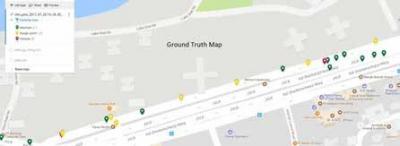
The road accident report (2014) published by the road transport and highways ministry, reports 6,672 deaths in accidents caused due to bad roads. Currently, road authorities manually monitor long stretches of roads at regular time intervals to ascertain the presence and locations of road anomalies. This is evidently a tedious process, which often leads to delayed road repairs, whose severity increases with time. The large number of fatalities and the scale of the issue, warrant an automated road anomaly detection system for road authorities, and an early warning system for vehicle drivers.Towards this end, our team has been working on the development of SafeStreet, which detects road anomalies in an automated manner. The system comprises of a mobile application which collects accelerometer and location data from a driver’s smartphone, and a web application that provides insights based on the gathered data. At the server, the large‐scale spatio‐temporal data is clustered in
a scalable manner. Signal processing and learning based algorithms are also used to classify various road anomalies and to quantify their intensities. The insights are visualised on a dashboard, which can be consumed by road authorities to prioritise road maintenance and repairs. A first-of-its kind early warning mobile application is provided for drivers to avoid potential accidents due to road anomalies and to facilitate a smooth drive. During the first phase of the pilot, we collected city-scale data using the SafeStreet app installed on the mobile phones of 15 taxi drivers in Mumbai, for a period of 30 days. A distance of approximately 25000 kms was covered during this period, and around 11000 road anomalies were detected. ßWe are in the process of further refining our system to validate our findings with respect to ground truth.
Prof. Bhaskaran Raman
